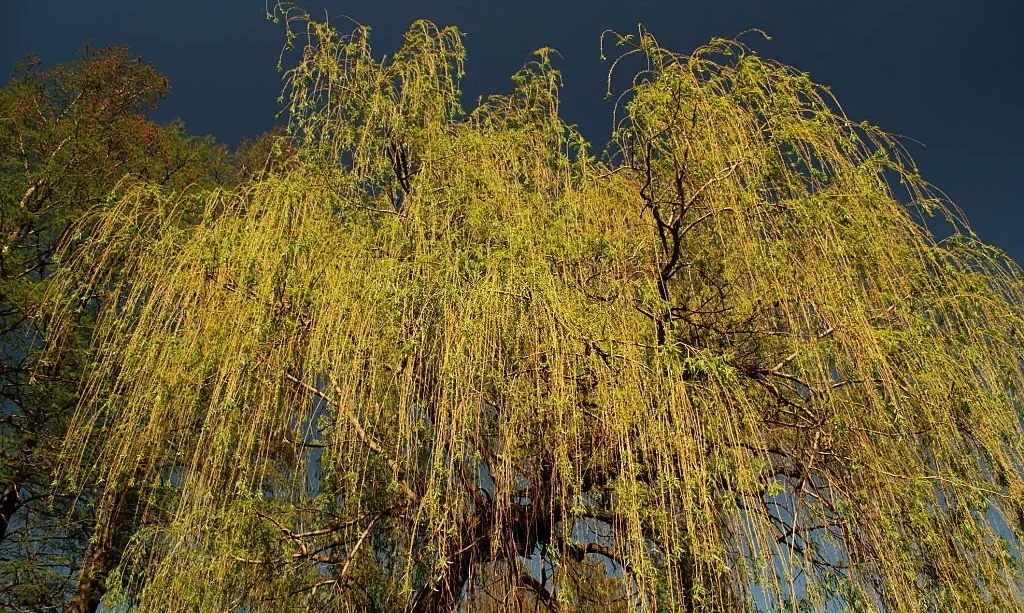Willow branches, with their natural elegance and flexibility, have long been cherished for their use in crafts and decorative projects. Their graceful curves and pliable nature make them a favorite choice for creating wreaths, baskets, and various artistic endeavors. Preserving these willow branches is vital to ensure they maintain their beauty and integrity for such projects. In this comprehensive guide, we will explore various methods to preserve willow branches, allowing you to enjoy their versatility and charm year-round.
Harvesting Willow Branches
The process of preserving willow branches begins with a well-timed harvest. The ideal time to gather willow branches is during late winter or early spring when the branches are dormant. It’s essential to employ respectful and sustainable harvesting practices to minimize the impact on the willow trees. By selecting the right tools and adopting a mindful approach, you can ensure a bountiful and eco-friendly harvest of willow branches ready for preservation.
Cleaning and Preparing Willow Branches
Before preserving willow branches, it’s crucial to prepare them properly. Cleaning the branches involves removing dirt, debris, and any potential pests that may have taken refuge on them. Furthermore, trimming and cutting the branches to the desired length and thickness for your projects is essential. These preparations set the stage for successful preservation and allow the natural beauty of the willow branches to shine in your craft and decor creations.
Air Drying Willow Branches
Air drying is a traditional and effective method for preserving willow branches. It allows the branches to naturally cure while retaining their flexibility and appearance. Here’s how to do it:
- Selecting the Right Location: Choose a well-ventilated, dry area where you can lay out the willow branches. This area should protect the branches from rain and direct sunlight, which can cause them to deteriorate.
- Arrange the Branches: Lay the prepared willow branches in a single layer, ensuring they are not crowded or touching each other. This helps to promote good air circulation, which is vital for the drying process.
- Patience Is Key: Air drying is a slow process, and it may take several weeks for the branches to fully cure. The exact drying time depends on factors like the thickness of the branches and environmental conditions.
- Regular Inspection: Periodically inspect the branches for any signs of mold or decay. If you notice any issues, remove the affected branches to prevent the problem from spreading.
Kiln Drying Willow Branches
Kiln drying is a faster preservation method that can be useful when you need to expedite the process. It maintains the quality of the branches while significantly reducing the drying time. Here’s how to kiln dry willow branches:
- Equipment Preparation: Ensure your kiln is clean and in good working order. Set the kiln to the appropriate temperature and humidity levels for drying willow branches. The recommended settings may vary, but typically, a temperature of around 100-120°F (37-49°C) and a humidity level of 25-30% work well.
- Load the Kiln: Arrange the willow branches in the kiln, making sure they are evenly spaced to allow for efficient drying. Be cautious not to overload the kiln, as overcrowding can lead to uneven drying.
- Drying Process: Start the kiln and allow it to operate according to your selected settings. It’s important to monitor the temperature and humidity levels closely. The branches are considered dry when they reach the desired moisture content, typically around 6-8%.
- Cooling Down: After drying, it’s essential to allow the branches to cool gradually. This helps to prevent any moisture from returning to the wood.
Kiln drying offers a faster way to preserve willow branches, making them ready for your crafting and decorative projects in a shorter timeframe. However, the choice between air drying and kiln drying ultimately depends on your specific needs and the resources available. Both methods result in well-preserved willow branches that are ready for your creative endeavors.
Preserving Willow Branches with a Sealer
Using a wood sealer or preservative is another method to protect willow branches from decay and pests, especially when they will be exposed to the elements in outdoor projects. Here’s how to preserve willow branches with a sealer:
- Selecting the Right Sealer: Choose a wood sealer or preservative suitable for outdoor use. There are various options available at hardware stores and garden centers. Look for a product that is eco-friendly and safe for your specific project.
- Application Process: Clean and dry the willow branches thoroughly before applying the sealer. Using a paintbrush, generously coat the branches with the sealer, paying special attention to the cut ends and any areas that may be vulnerable to moisture. Allow the sealer to dry completely as per the manufacturer’s instructions.
- Reapplication: Depending on the sealer used and the exposure of the branches to the elements, periodic reapplication may be necessary to maintain the protection. Be sure to follow the recommended schedule for resealing to keep your willow branches in top condition.
Storing Preserved Willow Branches
Proper storage is vital to ensure the long-term preservation of your willow branches. Here’s how to store them effectively:
- Airtight Containers: Place the preserved willow branches in airtight containers or bags to prevent moisture and air from affecting them. Ensure the containers are clean and dry before storage.
- Cool and Dry Location: Store the containers in a cool, dry place, away from direct sunlight and sources of moisture. A basement or a closet is often an ideal storage location.
- Labeling: Clearly label the containers with the date of preservation, the preservation method used, and any other relevant information. This makes it easier to identify and use the branches when needed.
- Regular Inspection: Periodically check the stored branches for any signs of spoilage, mold, or insect infestations. Early detection allows for prompt action, preventing the issue from spreading to other branches.
Conclusion
In conclusion, preserving willow branches ensures their longevity and maintains their beauty for a wide range of craft and decorative projects. Whether you choose to air dry, kiln dry, seal, or use a combination of these methods, your willow branches will be ready for creative endeavors throughout the year.
The versatility of preserved willow branches allows you to create unique and charming pieces of art, from rustic wreaths to elegant baskets and much more. Experiment with different preservation techniques to suit your specific needs and artistic preferences, and let the natural beauty of these versatile branches enhance your craft and decor creations.




